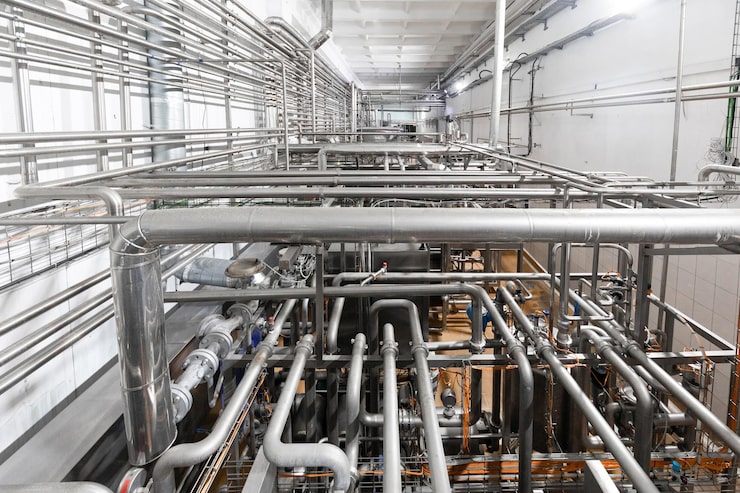Selecting the right pipe for drinking water systems is a critical decision that directly impacts water quality, safety, longevity, and overall plumbing performance. With a variety of pipe materials available in the market each with distinct characteristics the question of which pipe is better for drinking water requires a thorough understanding of material properties health considerations installation factors and long-term durability. This article provides a detailed analysis of common piping materials used for potable water supply and guides homeowners engineers and contractors toward making informed choices that meet both regulatory standards and user needs.

The primary criteria for pipes suitable for drinking water include non-toxicity corrosion resistance durability ease of installation and compatibility with hot and cold water. Pipes must not leach harmful chemicals or contaminants into the water. They should resist microbial growth and degradation from water chemistry or external environmental factors. Additionally pipes need to maintain structural integrity over time under various pressures and temperatures.
Common pipe materials for drinking water supply include copper plastic variants such as PEX CPVC and PVC as well as newer options like stainless steel and high-density polyethylene HDPE. Each material presents advantages and trade-offs that determine its suitability in different scenarios.
Copper pipes have long been regarded as a gold standard for drinking water systems due to their natural antimicrobial properties excellent corrosion resistance and mechanical strength. Copper does not release toxic substances and its durability often exceeds fifty years when properly installed. It performs well in hot and cold water lines and can withstand temperature fluctuations and high pressure.
However copper piping can be costly compared to plastic alternatives and installation requires skilled labor for soldering or compression fittings. In some regions water with low pH or high acidity can corrode copper causing pinhole leaks over time. Despite this copper remains a top choice for residential and commercial plumbing with rigorous standards and certifications supporting its safety for potable water.
PEX or cross-linked polyethylene has gained popularity in recent decades because of its flexibility ease of installation and resistance to scale and chlorine. PEX pipes do not corrode or pit and can handle both hot and cold water. Their flexibility reduces the need for fittings and minimizes leak points which speeds up installation and lowers labor costs.
PEX is certified safe for drinking water by organizations such as NSF International but it must be protected from prolonged UV exposure as sunlight degrades the material. Additionally PEX may be susceptible to damage by rodents if not properly shielded. Overall PEX offers a cost-effective and reliable piping solution for modern potable water systems especially in residential applications.
CPVC or chlorinated polyvinyl chloride is another plastic pipe option designed specifically for hot and cold water. Compared to standard PVC CPVC has enhanced temperature tolerance making it suitable for hot water lines. CPVC is corrosion resistant and does not leach harmful chemicals. It is also rigid which aids in structural stability.
CPVC installation typically involves solvent welding which requires proper ventilation and trained installers but results in strong leak-proof joints. This material is widely accepted by plumbing codes and provides a durable alternative to copper and PEX particularly where heat resistance is essential.
Standard PVC pipes although widely used in plumbing are generally not recommended for drinking water supply because they cannot withstand hot water and may release additives into the water. Their use is mainly limited to cold water supply or drainage systems.
Stainless steel pipes offer exceptional strength corrosion resistance and longevity. They do not leach contaminants and resist microbial growth. Stainless steel is ideal for industrial and high-end residential water supply systems but the higher cost and complex installation limit its widespread use.
High-density polyethylene HDPE pipes are flexible corrosion resistant and suitable for potable water distribution especially in underground installations. HDPE is lightweight and resistant to chemical degradation. Its joints use heat fusion techniques creating strong seamless connections. HDPE is increasingly preferred in municipal water systems for its durability and environmental benefits.
When evaluating which pipe is better for drinking water several practical considerations come into play. These include water chemistry local building codes expected lifespan maintenance requirements and budget constraints. For instance in areas with aggressive water chemistry copper may require additional treatment or use of plastic alternatives.
Certifications such as NSF/ANSI 61 for drinking water system components verify that pipes meet stringent health and safety criteria. Choosing pipes with proper certifications ensures compliance and consumer confidence.
In terms of environmental impact plastic pipes like PEX and CPVC have lower embodied energy compared to metals but concerns remain regarding recyclability and chemical additives. Copper and stainless steel are more sustainable due to recyclability and longevity.
To summarize the choice of which pipe is better for drinking water depends on balancing safety durability cost and installation factors. Copper remains a premium option valued for its proven track record antimicrobial properties and strength. PEX offers flexibility and ease of installation making it ideal for residential plumbing. CPVC provides a reliable plastic alternative with heat resistance. Stainless steel and HDPE serve specialized applications where superior durability or environmental resistance is required.
Ultimately consulting plumbing professionals reviewing local regulations and considering specific project needs ensures the best pipe material is selected to deliver clean safe drinking water efficiently over many years. Making informed decisions about piping systems contributes to healthier homes communities and sustainable water infrastructure.


